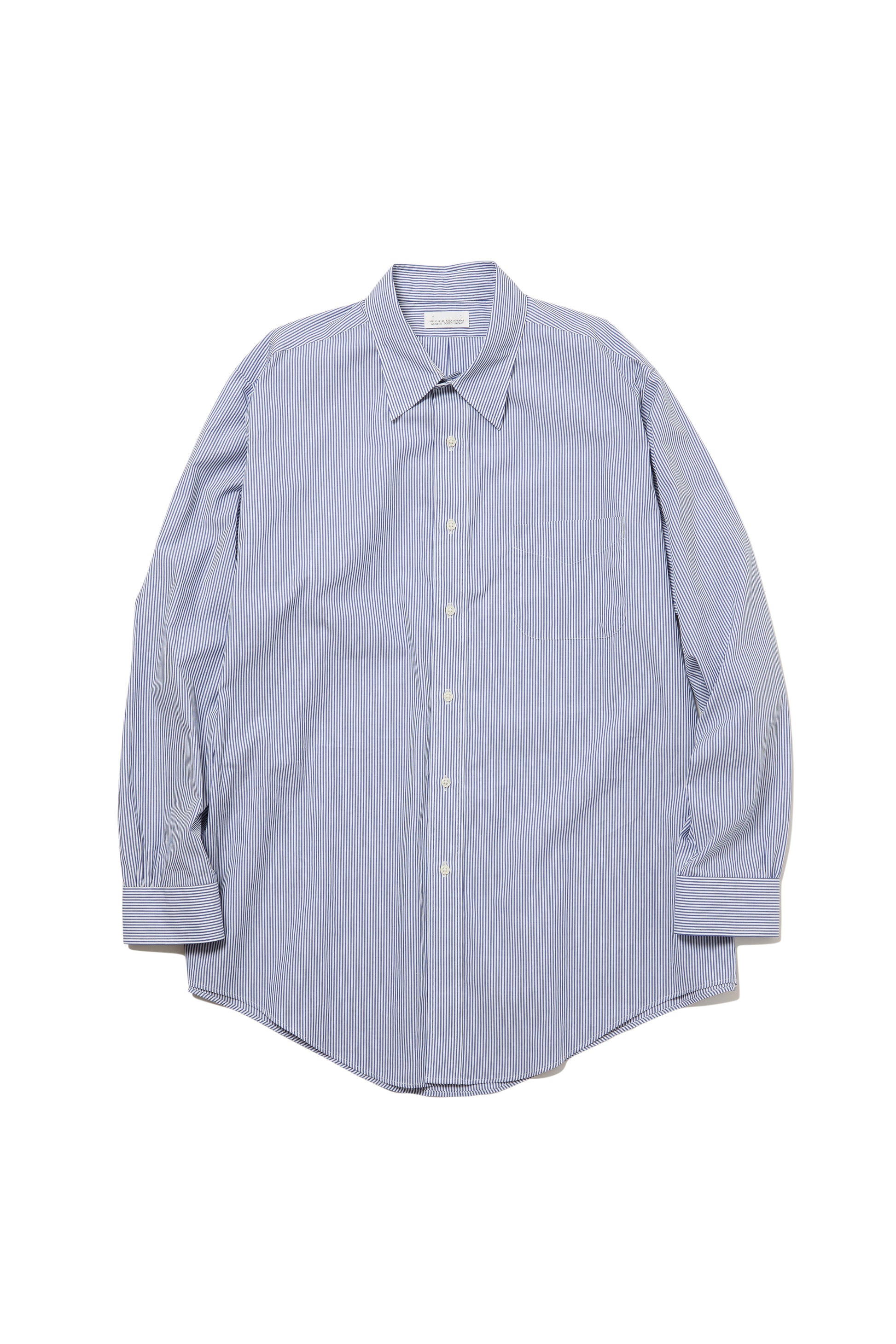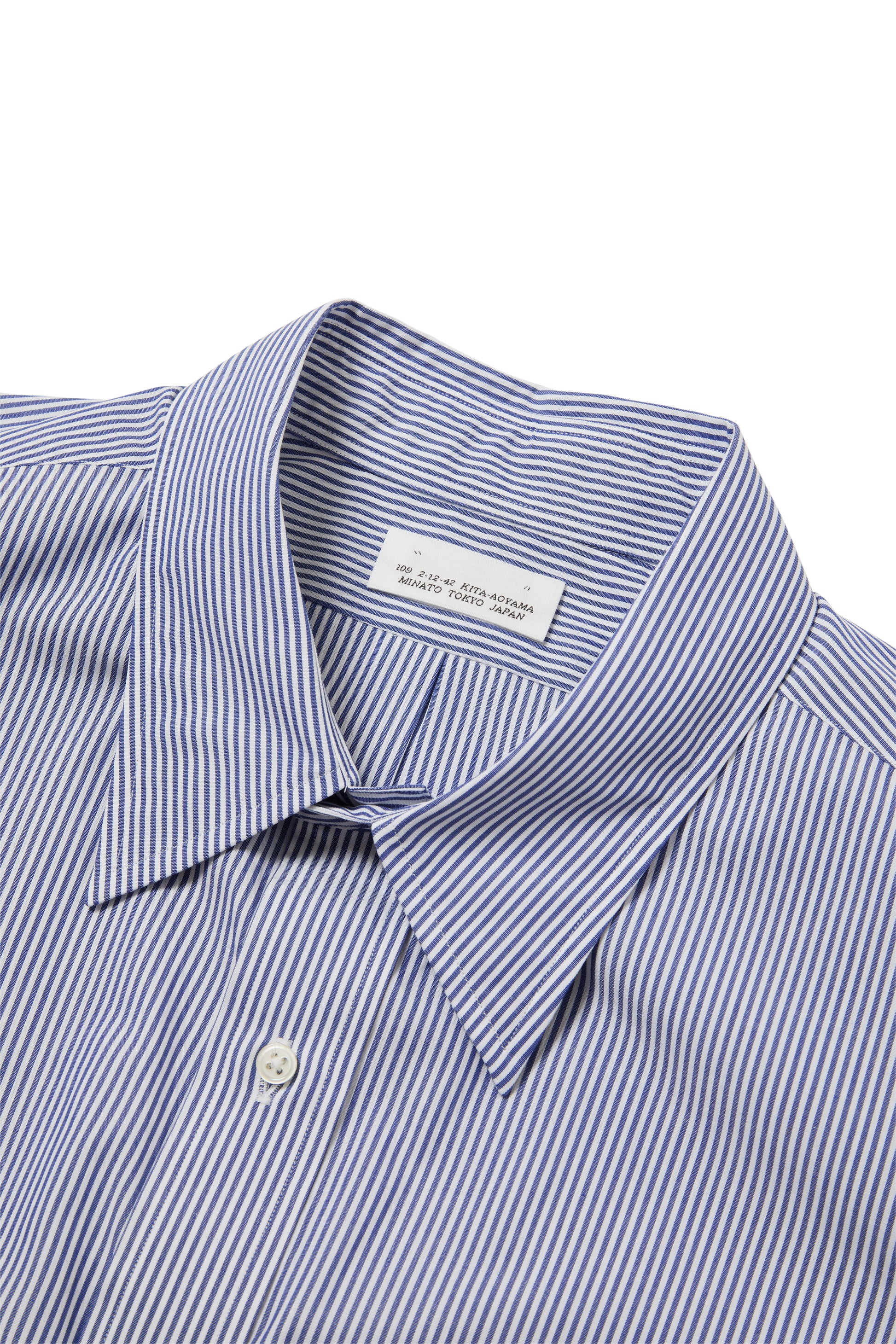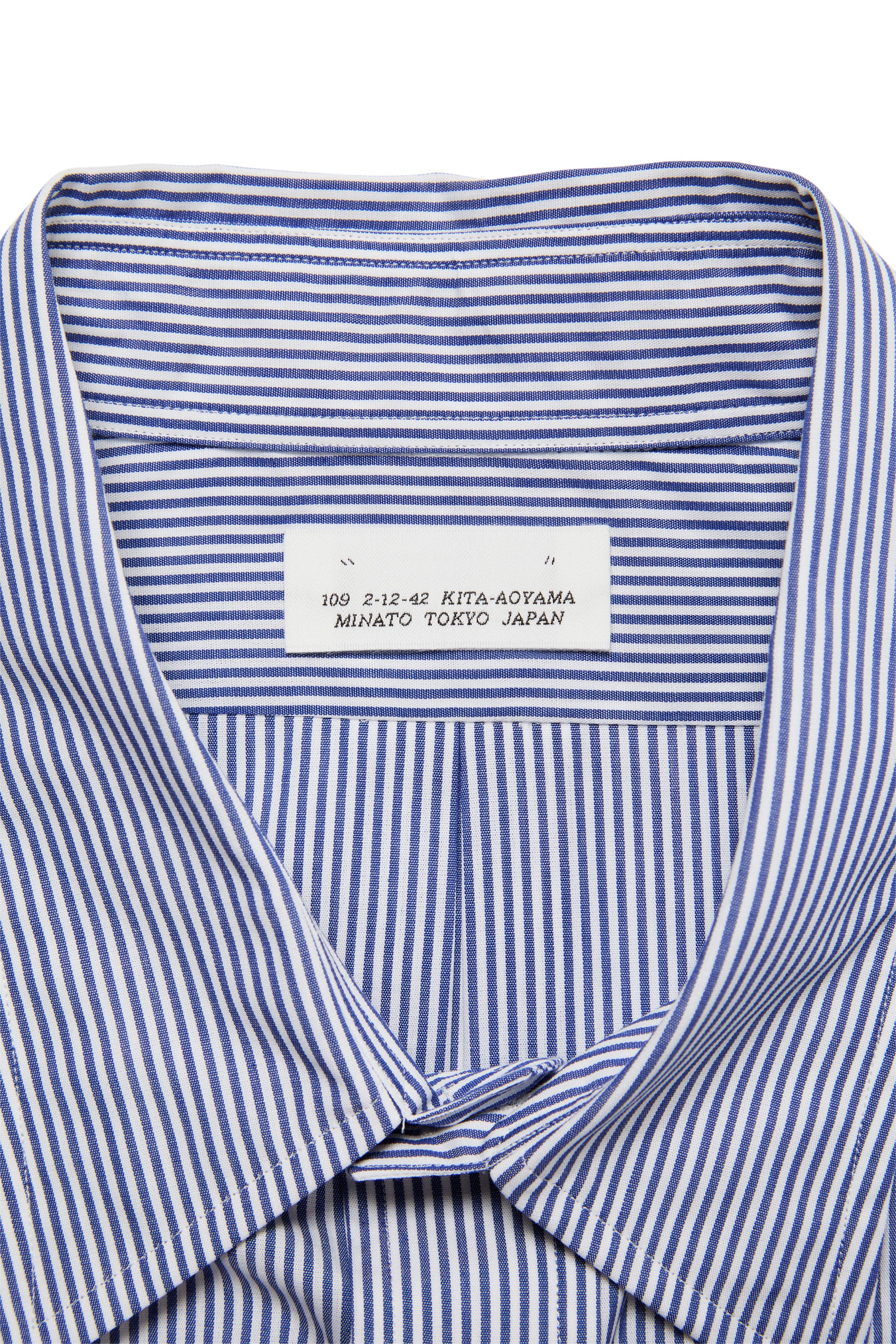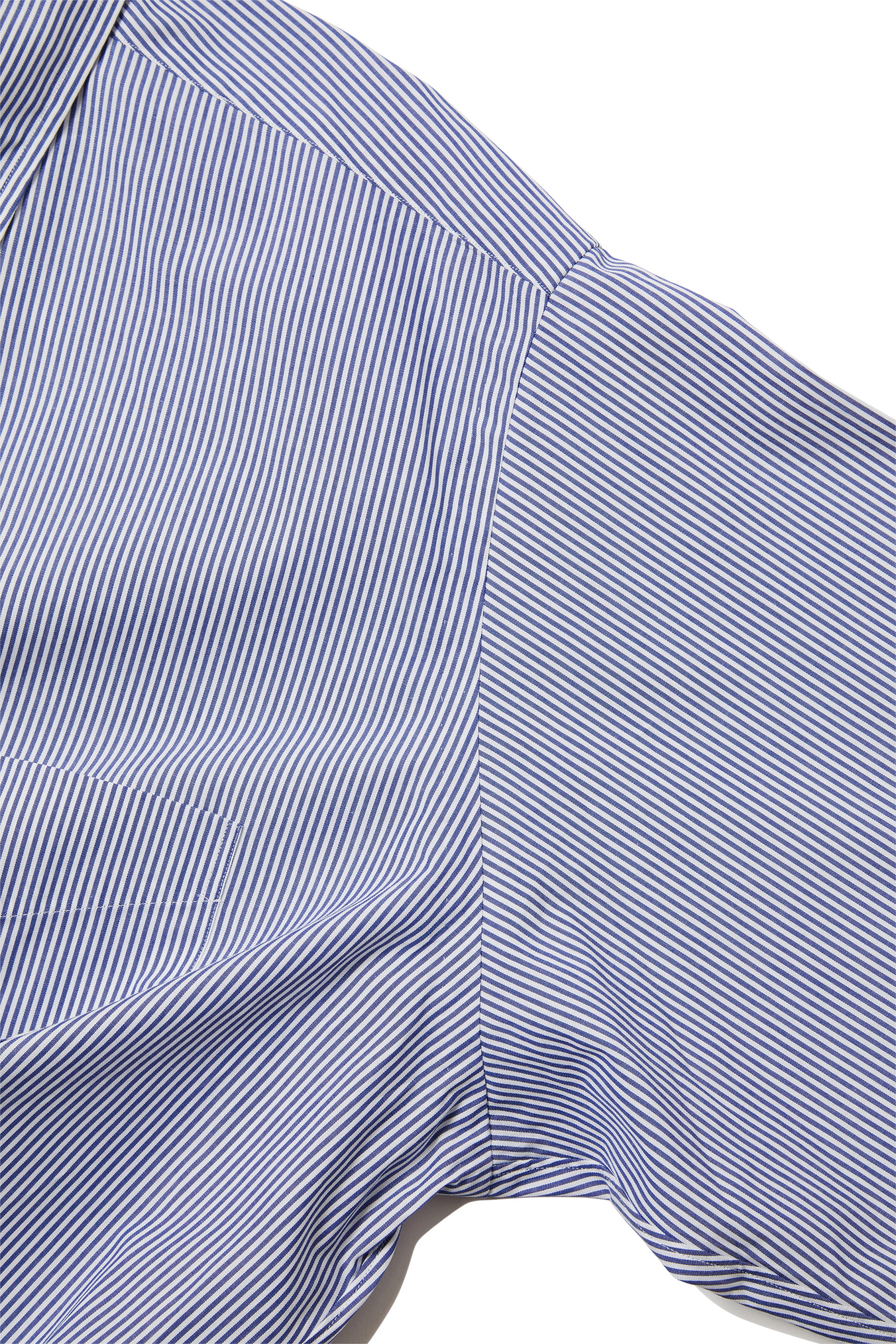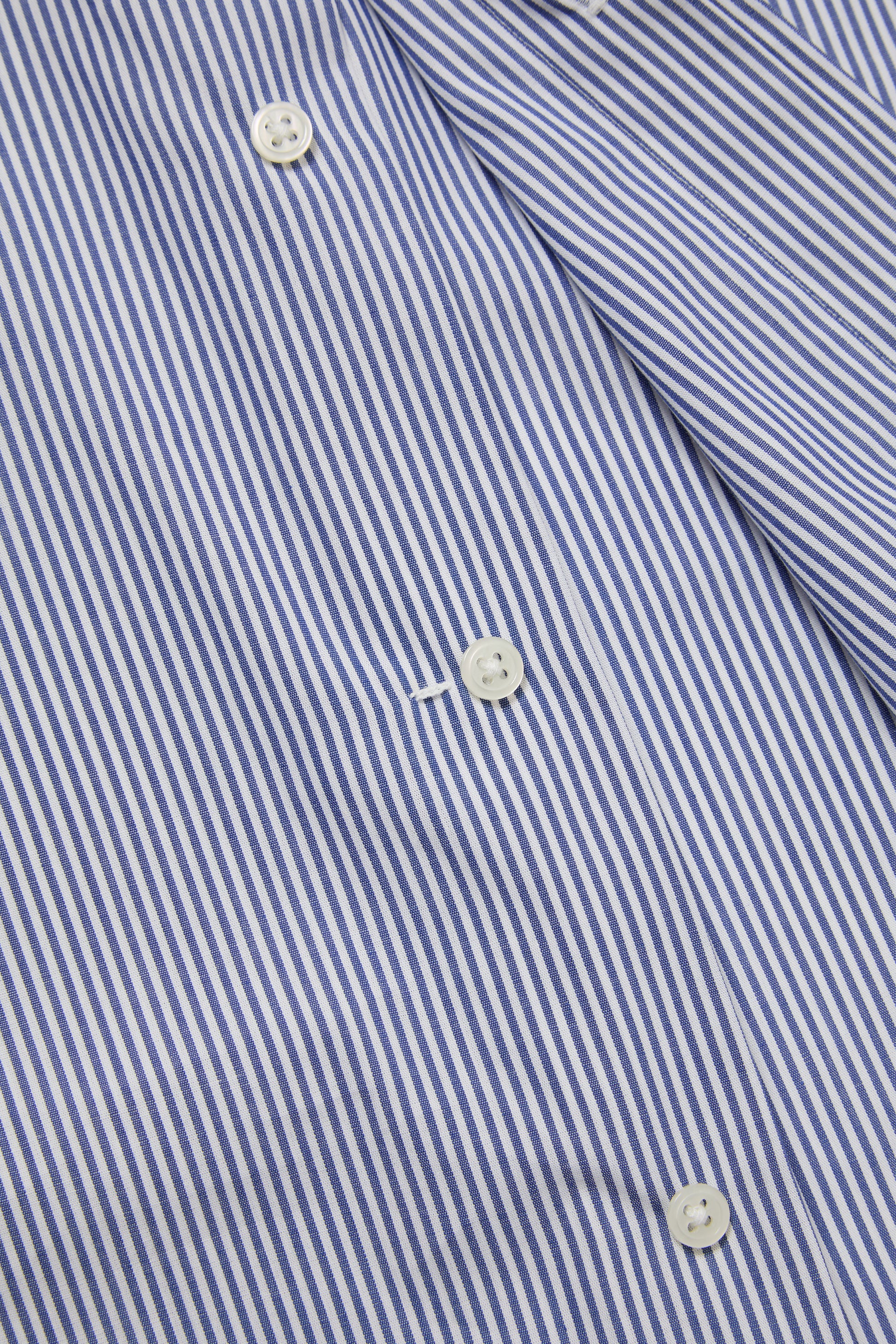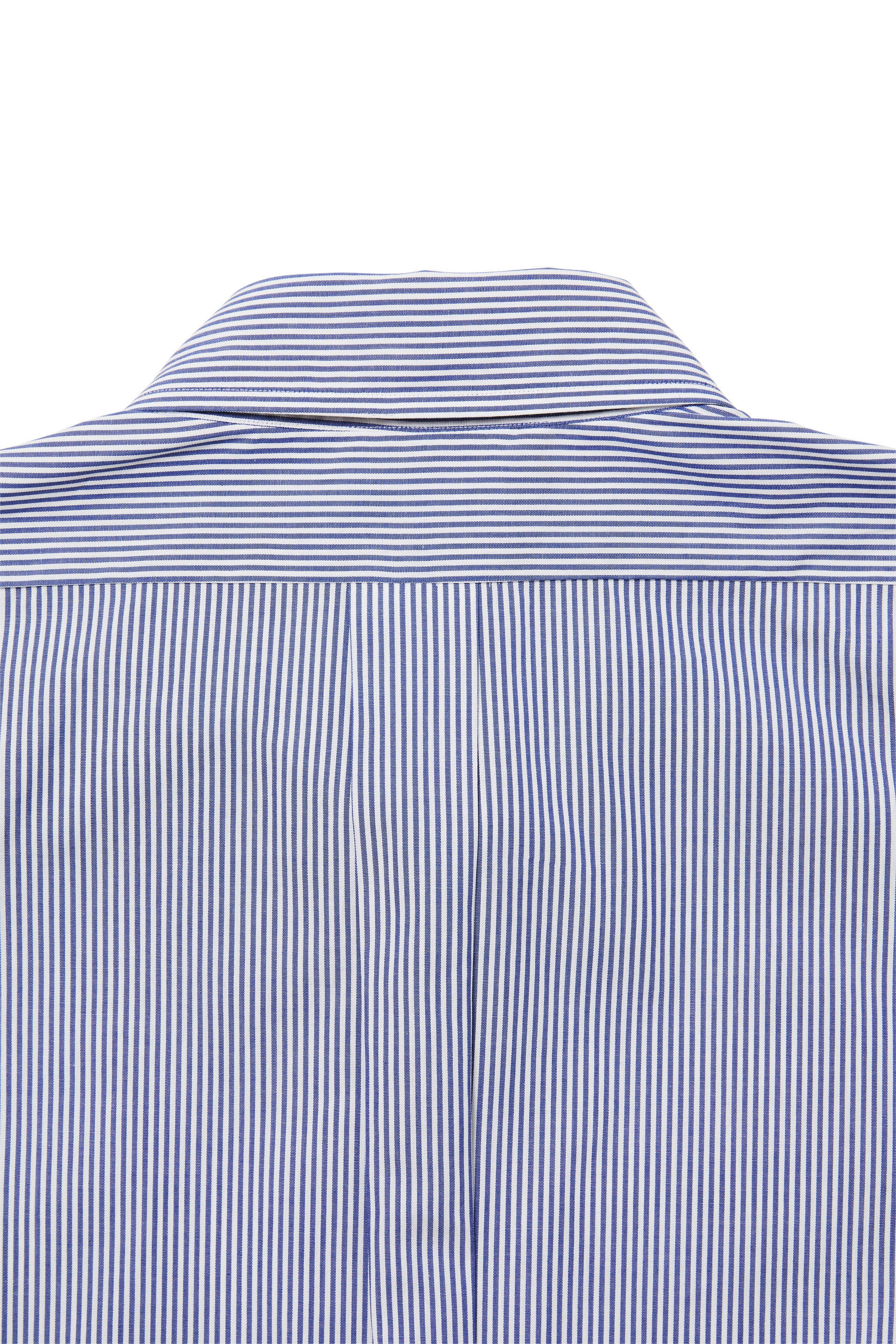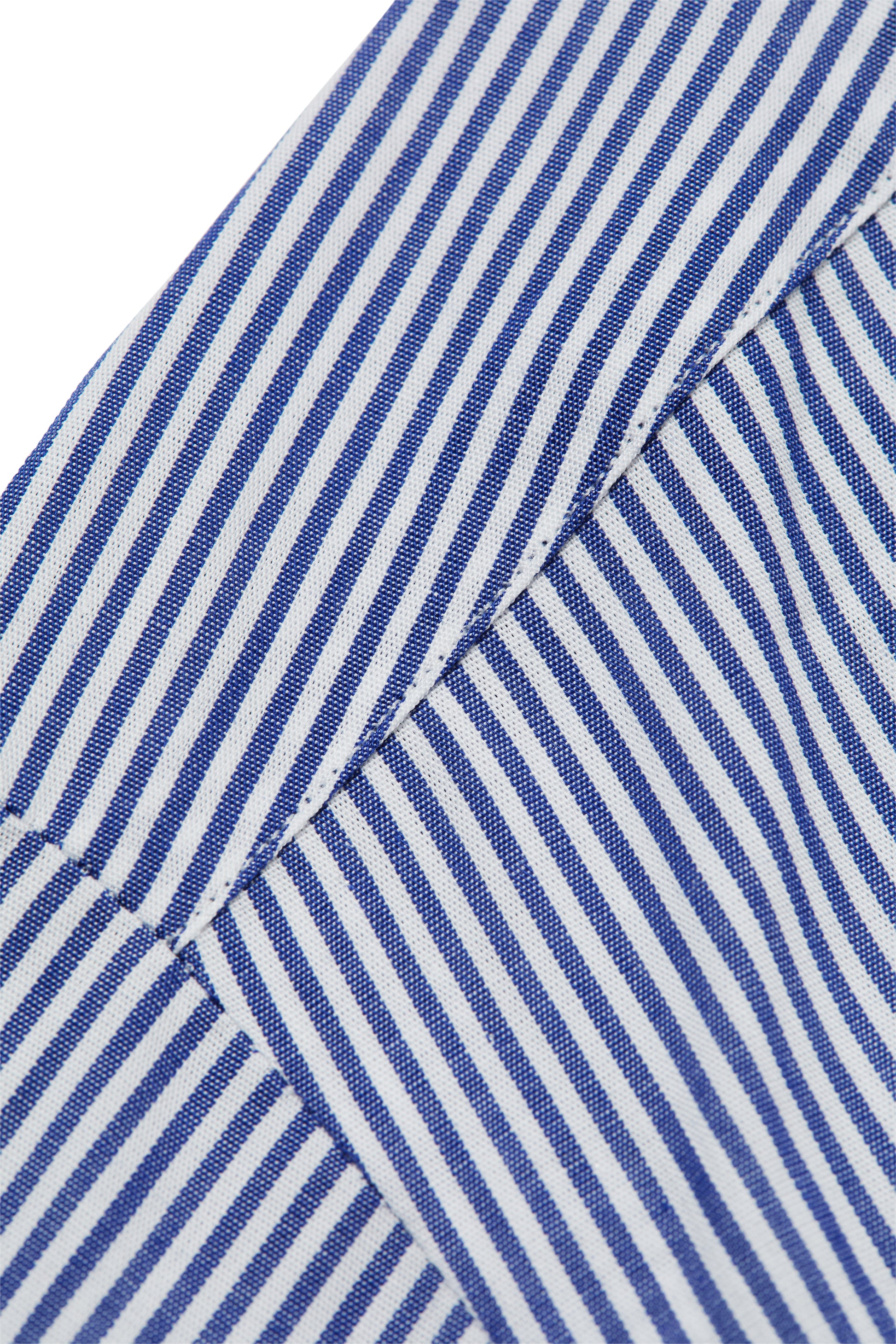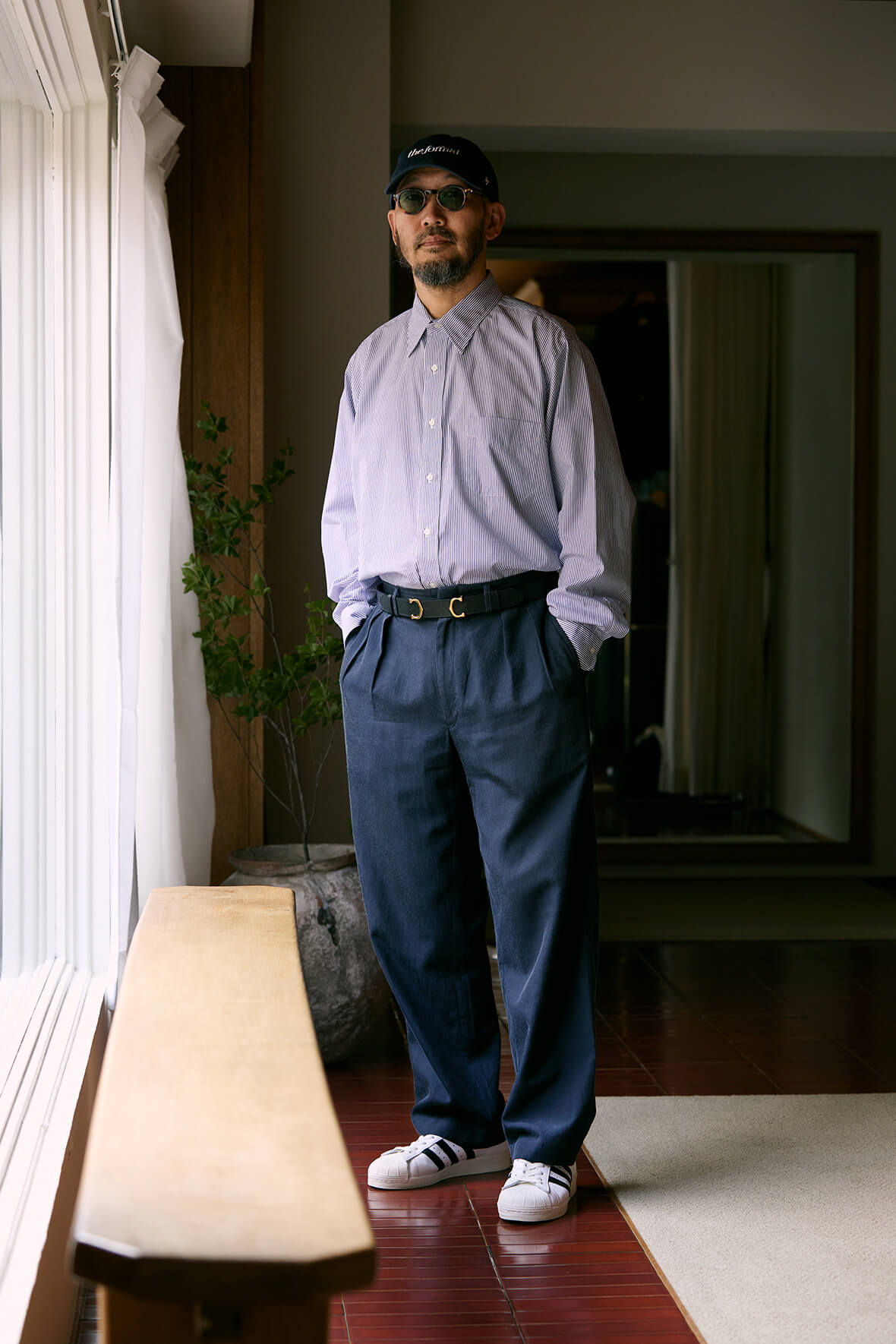BOUTIQUE × HOUYHNHNM
Regular Collar Shirt Stripe
Regular Collar Shirt Stripe
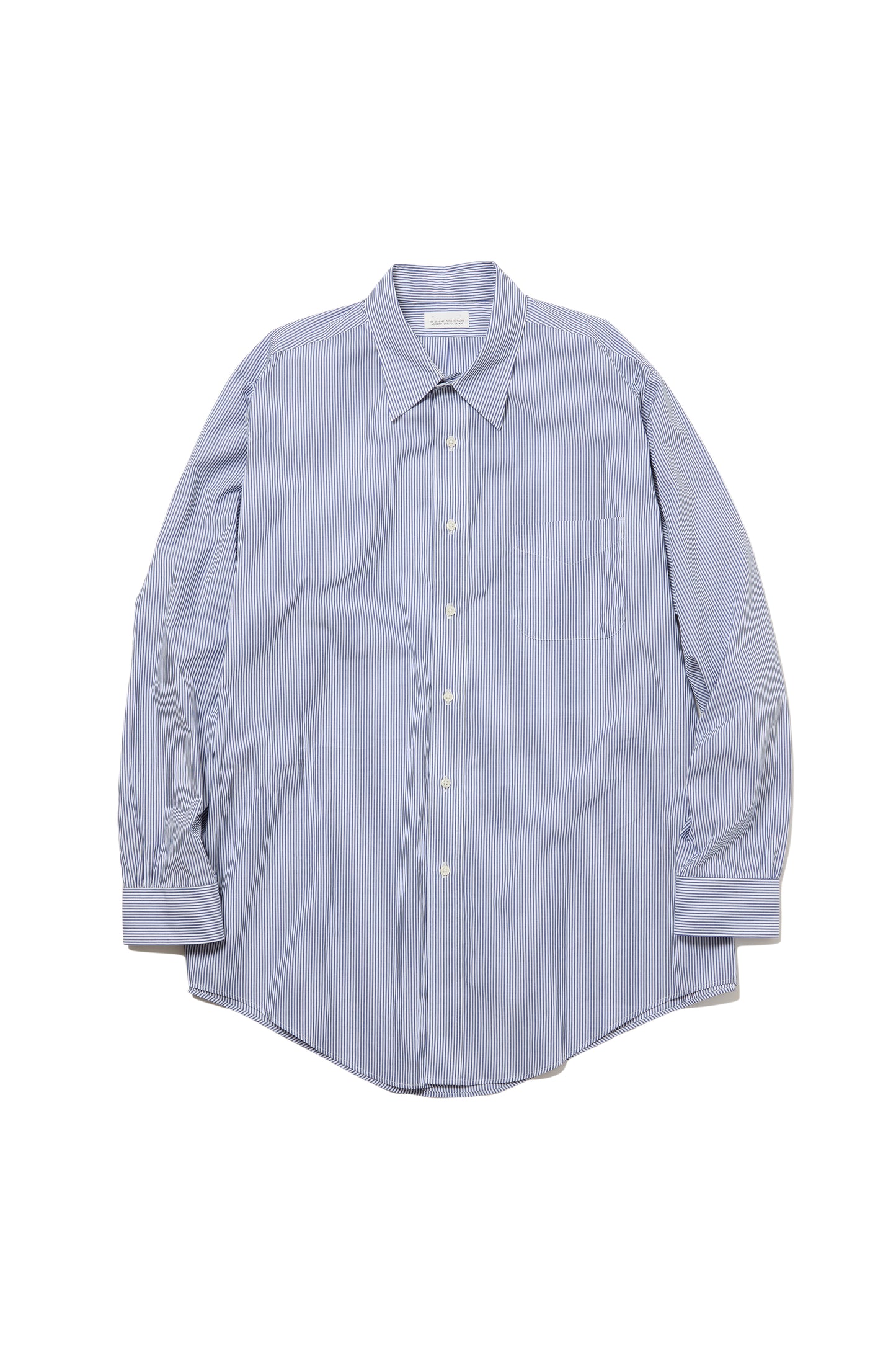
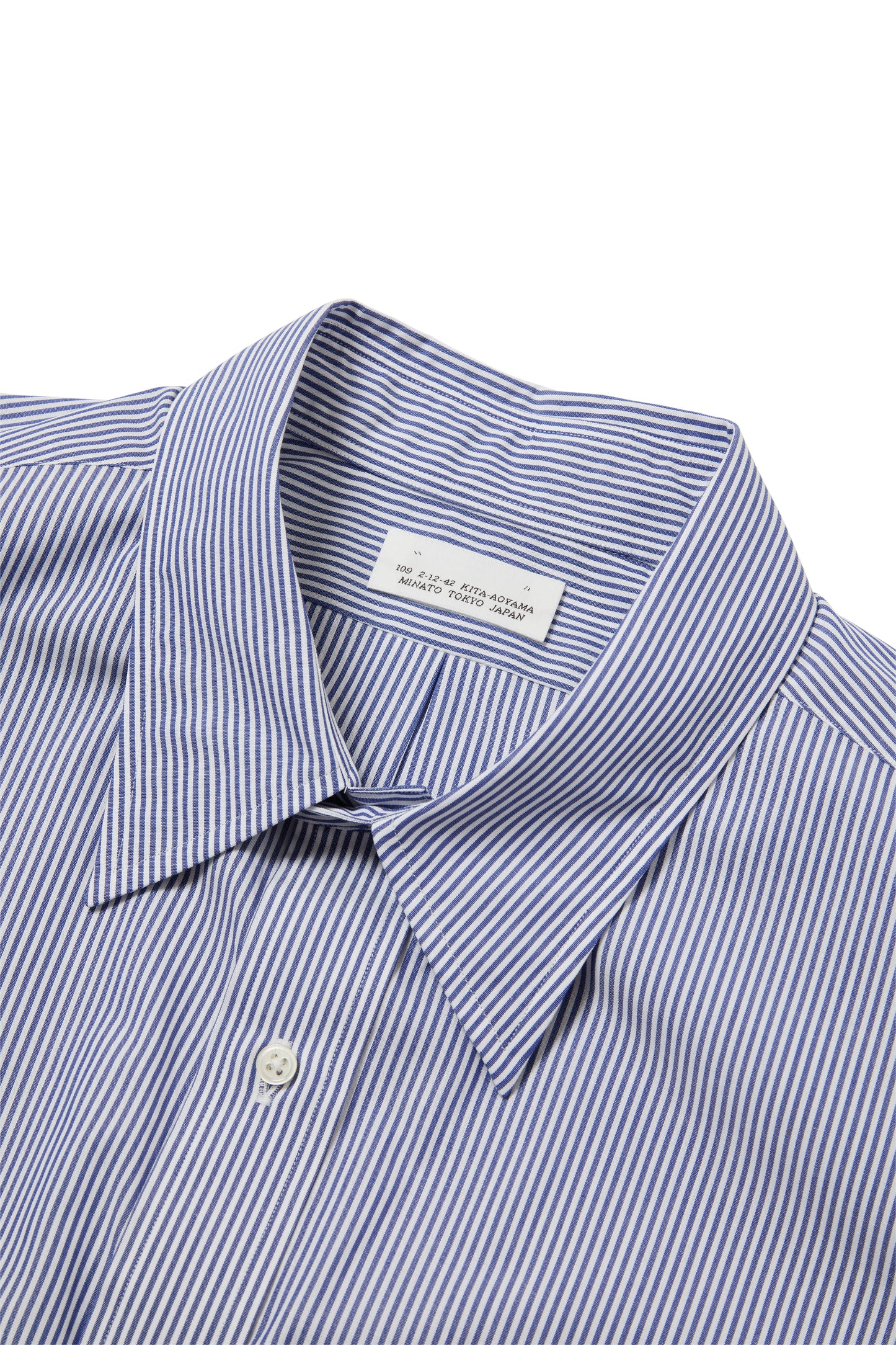
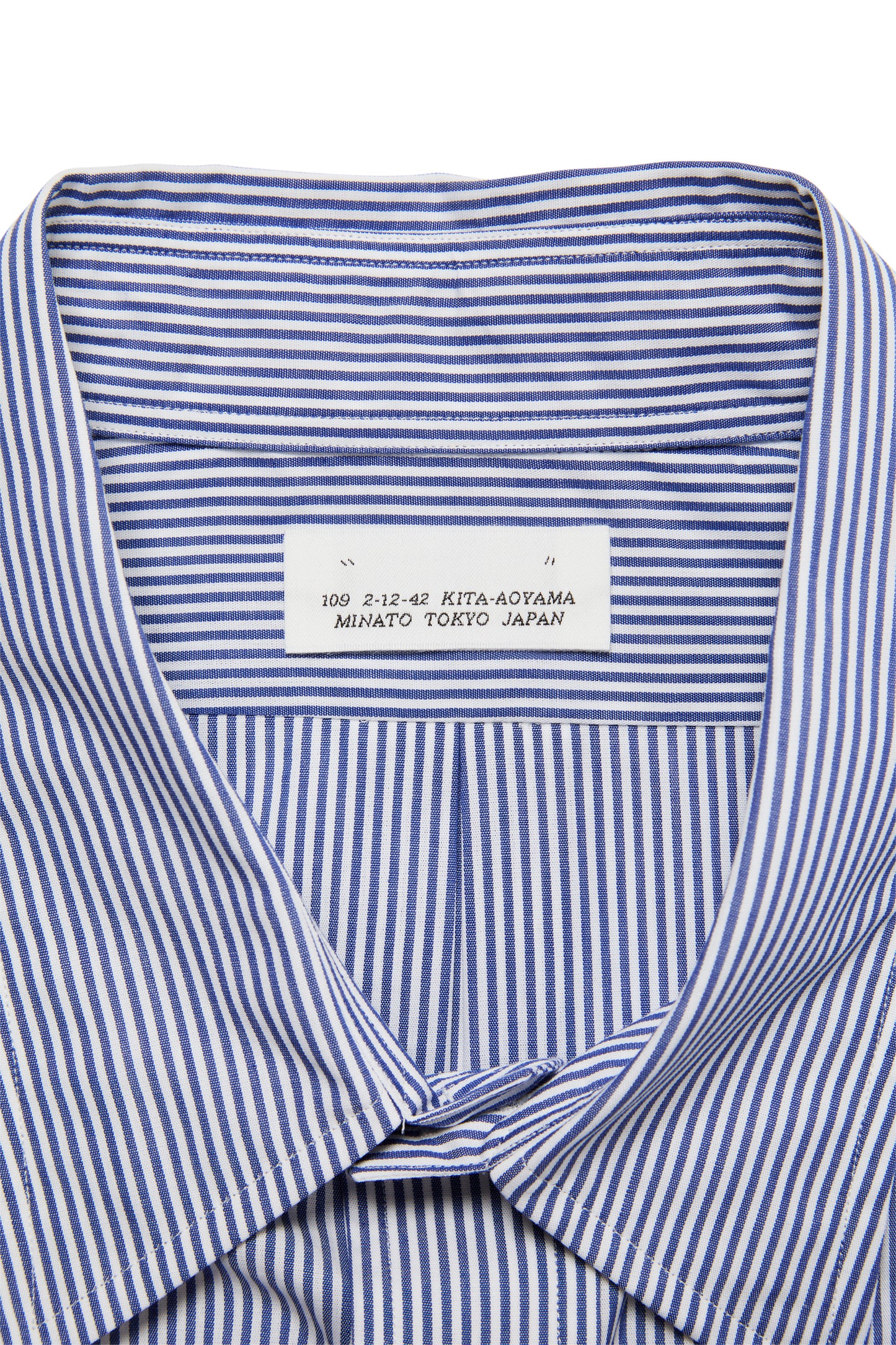
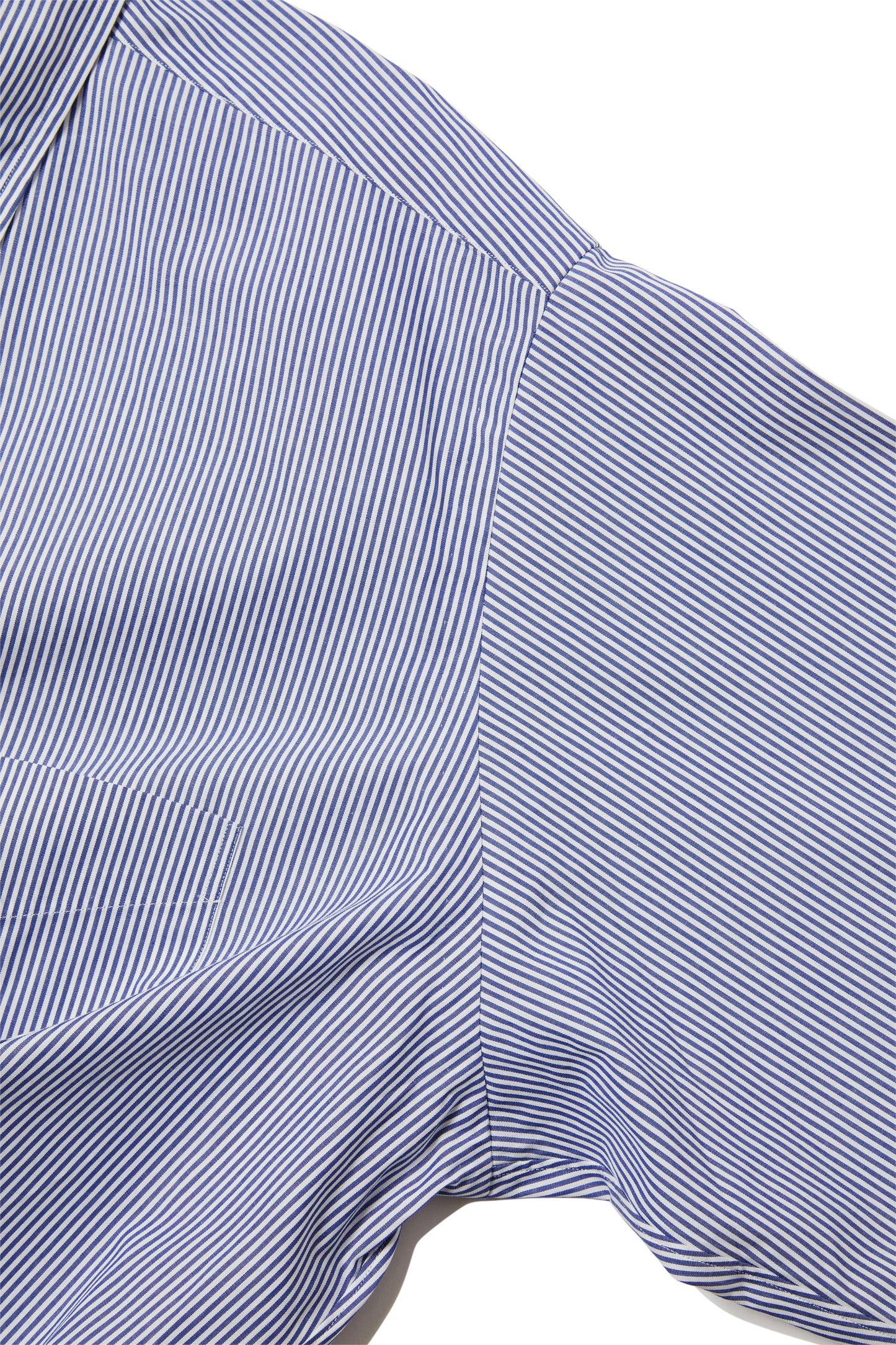
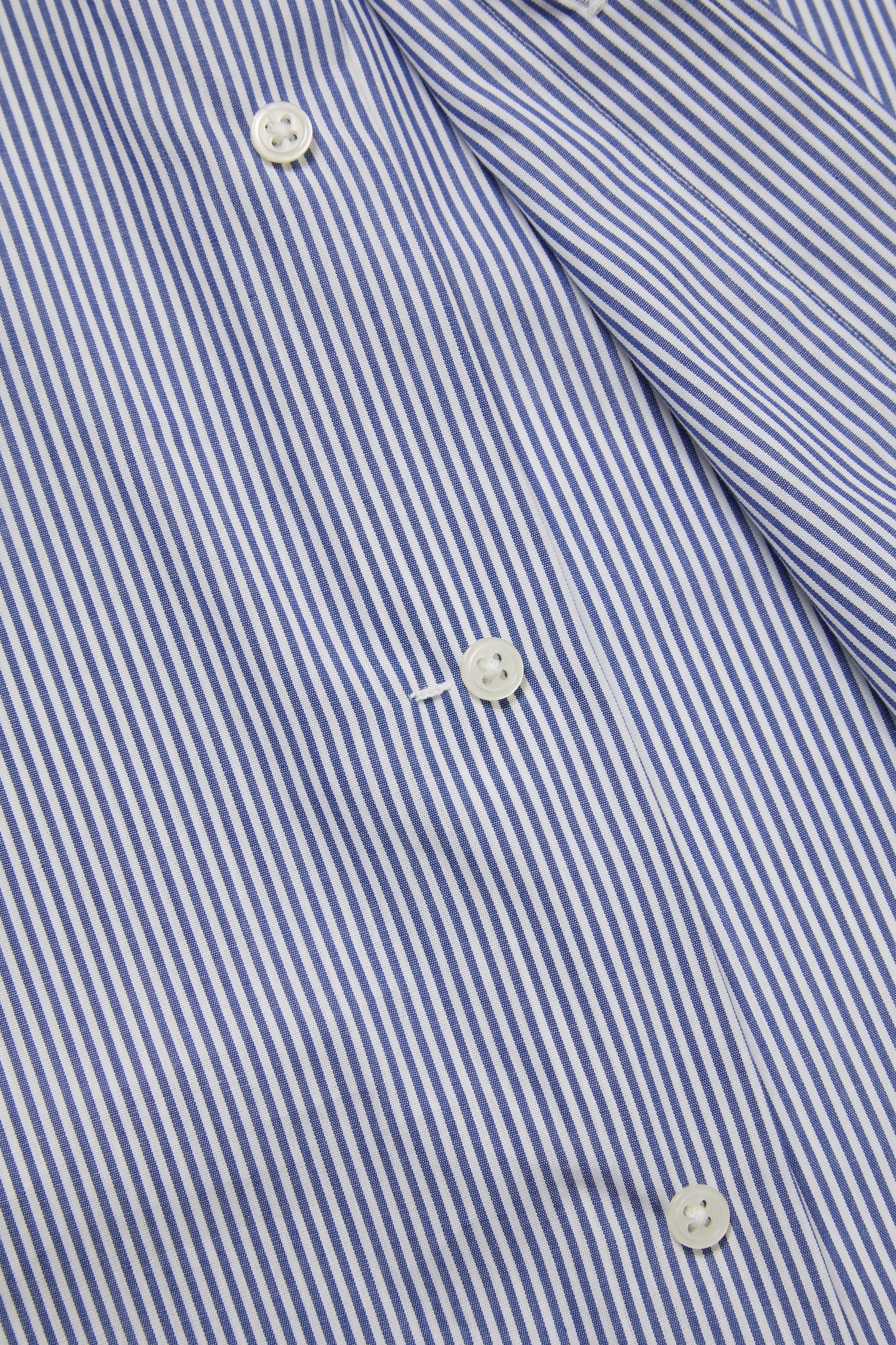
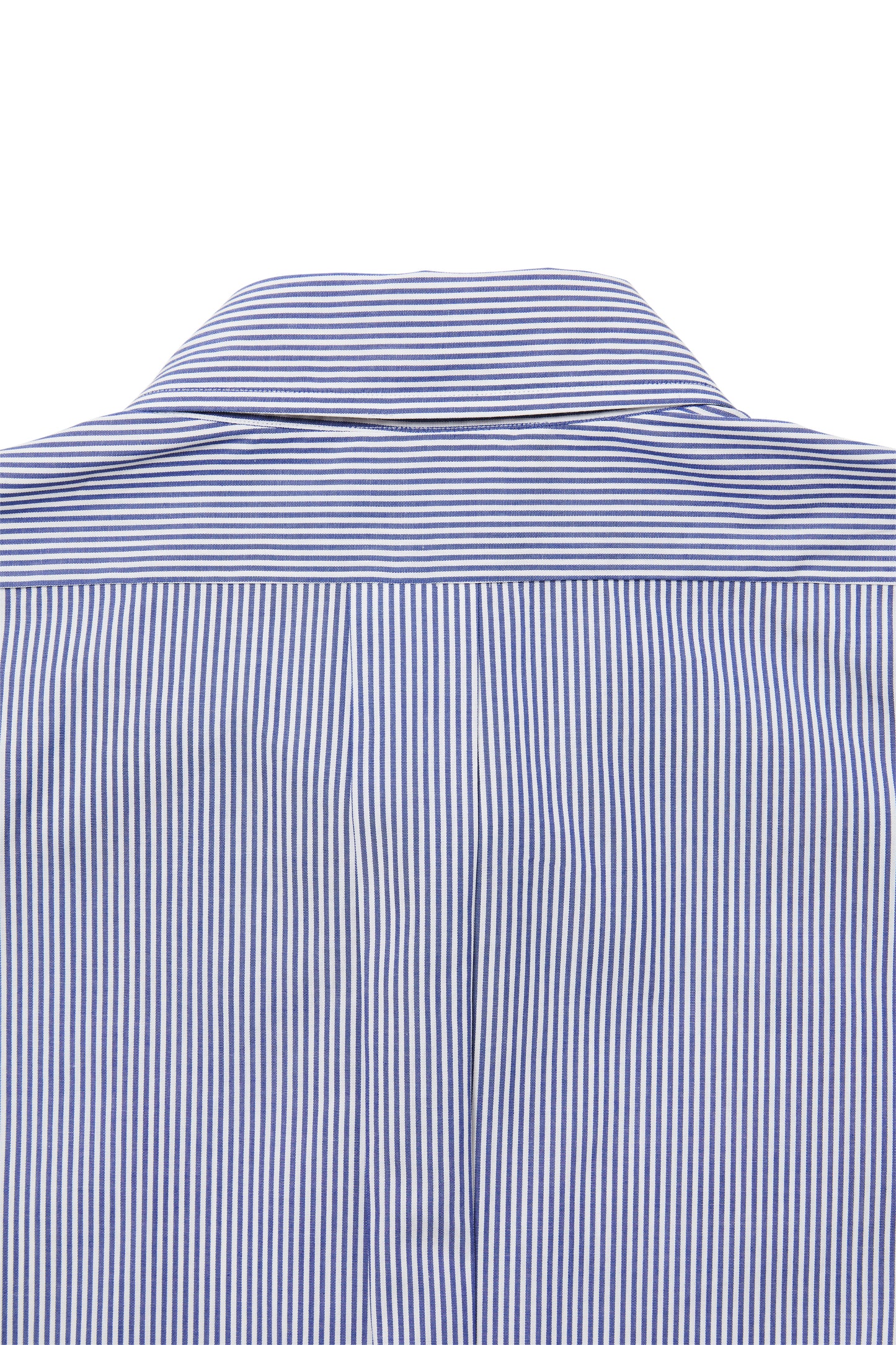

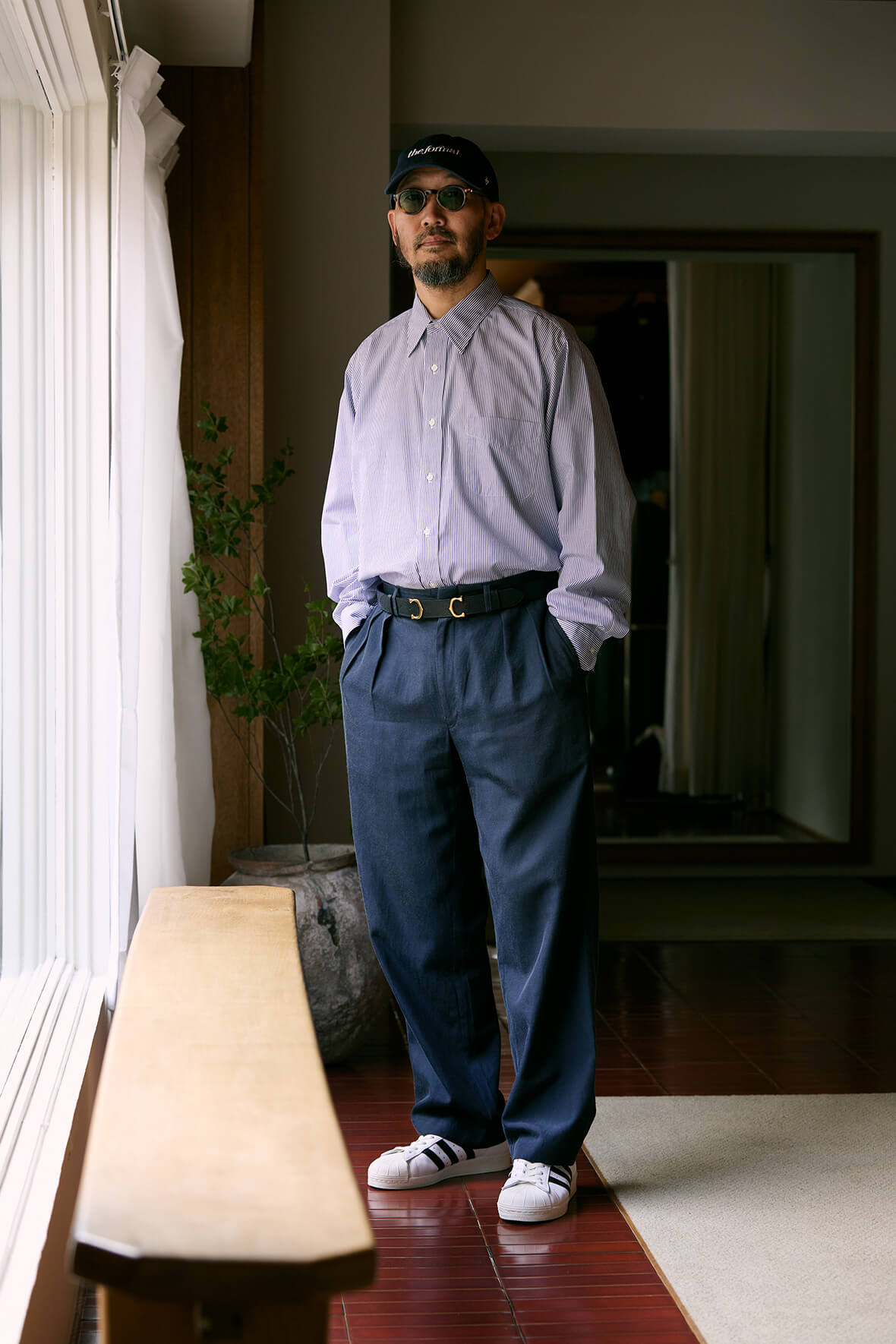
This piece is based on the original "BD shirt" from Kaneko's shop "BOUTIQUE," and adds a touch of FOUYHNHNM's essence. The collar has been changed to a regular collar, and the shirt fabric is striped and checked.
Although it has a casual look, the hand-sewn shoulders, stitching that runs right up to the edge, and the fine stitching all make it a dress shirt. It goes with everything from smart trousers to jeans and chinos. A casual dress shirt that can be paired with any pants, depending on how you interpret it, has been created.
------------------------------------------------------------------------------------------
Improving tailoring is a tool-based idea.
- What is the story behind the creation of the "BOUTIQUE" shirts?

Kaneko: A long time ago, I made a shirt using fabric from Carlo Riva, the world's top fabric manufacturer, with the same top-notch tailoring. The shape was inspired by the BD shirts of a long-established American brand, and the tailoring was incredibly beautiful, but somehow casual. It was obviously a good product, but I thought, if the tailoring is this good, surely it doesn't matter what fabric it's made from?
- Generally, we often see shirts that are made with good fabric but are not particular about the tailoring. However, I have not seen many items that take the opposite approach.
Kaneko: The shirts we make at "BOUTIQUE" are made from fabrics that we happened to come across at a fabric store. They're mass-produced, so they're very cheap. But I couldn't imagine how they would end up producing bad shirts. That was the idea, or rather, the inspiration that led to this.
When I actually tried making it, I ended up with something incredibly good. After all, good tailoring really improves the finished quality of the clothing. It's true that compared to high-quality fabrics, the sheen and feel are different, but it's by no means lacking. When I was wearing it, the designer would ask me, "Where's the fabric from?" and I realized that good tailoring really makes the fabric look good (laughs). But no matter how good the fabric is, it doesn't mean the tailoring will look good. So, after all, tailoring is really important.

- Even though it's a common fabric that's widely available, it's by no means of poor quality.
Kaneko: The reason it's cheap is simply because it's mass-produced. It's a fabric that's used in clothing in general, so in a sense it's safe and reliable quality. It's stable and durable. So just because it's cheap doesn't mean it's of poor quality.
- I've heard that such standard materials allow craftsmen to demonstrate their true talents more easily. High-quality materials can be too delicate and difficult to handle, but universal materials are something that everyone is accustomed to working with.
Kaneko: That may be true. I often hear that if the material is too good, it becomes slippery and difficult to sew, or the sewing machine needle won't go in. If you think about it, vintage clothes were probably made using fabrics that were in circulation at the time, and they weren't made with the intention of doing something special, so the ideas were probably much simpler.
- That may be true. It was more like a tool.
Kaneko: However, to create something good, you need experience and knowledge. The important thing is the context in which you utilize that. In my case, I am always drawn to clothes that are made as tools, so the "BOUTIQUE" shirts really reflect that way of thinking.
- Are you saying it's a tool in the world of dresses?
Kaneko: That's right. Beautiful sewing is a given in the world of dresses. I think that good tailoring is a tool-like concept. But when you move it to a casual setting, it becomes interesting in terms of fashion. It's unique to wear nice clothes in a casual setting. Even someone who is usually sloppy can look neat and tidy when wearing this. I think the fact that it can be worn in this way is what makes it a tool.

American shirts, crafted with an Italian mindset.
- This time, Houyhnhnm has created a shirt using London stripe fabric and two different check patterns. It is not a Blu-ray but a regular color.
Kaneko: After some back and forth with the Houyhnhnm editorial team, we came up with the idea that stripes would be a good choice. Plain broadcloth would look too dressy, and we thought that many of our readers would wear casual bottoms like military pants or chinos. London stripes are a typical American traditional pattern, and somehow we thought that would suit that vibe.

- This is also a fabric that is commonly available.
Kaneko: That's true. However, this time it wasn't a solid color but a pattern, so it was difficult to find a good one. After all, the pattern doesn't come out nicely unless you use fine count yarn. While digging around, I found an attractive striped fabric, and in the process I also found two checkered patterns.


- This check pattern 2 feels somehow delicate when you touch it. Is it made of a special fabric?
Kaneko: The small check pattern is from Monty, and the large check pattern is from Thomas Mason. We only have a small amount, and we can only make a limited number of pieces, so even though it's a good fabric, we're offering it at a special price. It's interesting that this type of check pattern is an extension of London stripes, and since the base is an American traditional shirt, we felt it would go well with it.
- Each one has a different expression, but there's a strange sense of unity.
Kaneko: It felt very real to me. It's not too pretentious, and if it respected the current mood too much, it might not be wearable next season. It's a timeless pattern, not particularly trendy, but somehow just right. If it was in my wardrobe, I'd want to take it out and wear it often.
- Perhaps it's because of the quality of the tailoring, but even though it's based on traditional style, it doesn't feel like it's quintessentially American.
Kaneko: It has an indescribable sense of balance. The collar is also sampled from the shape of the good old American traditional BD shirt. It has been faithfully reproduced down to the smallest details, such as the curve on the outside, but in a good way, it's not cloying and is a shape that fits in well.

- The silhouette is boxy.
Kaneko: We slightly adjusted the balance between the length and width of the shirt compared to the original, making it wider on the sides. Originally, the length was set long so that it could be tucked in, but now that we live in an age where it can be worn outside, we edited it to be more modern.
- And then you make it with the best tailoring.

Kaneko: We were conscious of Neapolitan tailoring when it came to the tailoring. For example, the armholes are hand-sewn, but can you see that the stitching line under the armpits is misaligned? This is because the sleeves are sewn to come to the front. In Italian thinking, all jacket sleeves are attached to the front to match the structure of the human body, so we wanted to do the same with shirts. The base is an American shirt, but we've adapted it according to Italian thinking. That's its most distinctive feature.

Kaneko: We also added a detail called a glican, which is similar to a bar tack, to just one buttonhole. The fabric on the back of the placket is thin, so I think this is a feature to keep it in place, and you can find this kind of detail on high-end Italian shirts. That's how we incorporated European ideas.
-Even with this type of arm sewing, are there only a limited number of general factories in Japan that can achieve it?
Kaneko: That's right. Naples was originally a poor city, and apparently the lack of machines led to a culture of hand sewing. However, in Japan, there are machines, so conversely, there are few people with the skills of Neapolitan artisans. There are differences in background between Japan and Naples, and the skills born out of poverty are what allow beautiful products to be made.
When you sew with a sewing machine, it tends to pucker and look like it was sewn by machine, but something sewn by hand like this has a really soft feel to it.

- It's more curved than linear, and has a plump, warm feel to it.
Kaneko: Italian shirts are obviously sexy and fluffy. No matter what you do, they don't have a crisp look. I think that's why Japanese people are attracted to Italian things. I wanted to incorporate those elements into American traditional shirts.
- Does the fineness of the movement of the hands also affect how it looks?

Kaneko: I think it's quite a lot. This time it's a pattern so the stitches are hard to see, but when they're sewn in detail it really does make a difference in beauty.
- I feel like that kind of sensitivity also influences the "sexiness" that Mr. Kaneko talks about.
Kaneko: I think so. It's a shirt with a very relaxed fit, so if it were sewn using normal techniques it would end up looking too casual. But by creating this shape through beautiful tailoring and sewing, it gives off an interesting and sexy vibe.
| M size (2) | L size (3) | |
| Bust | 71cm | 73cm |
| Length | 82.5cm | 84.5cm |
| Sleeve Length | 62cm | 63cm |
| Shoulder Width | 48.5cm | 50cm |
| Neck Circumference | 42.5cm | 44.5cm |

